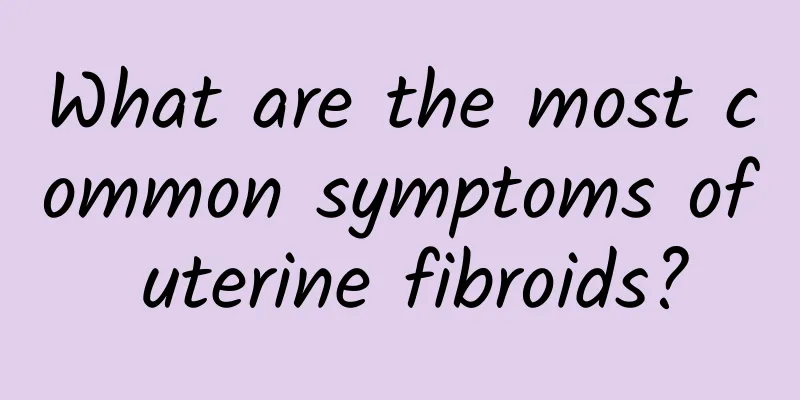What are the most common symptoms of uterine fibroids?

|
What are the most common symptoms of uterine fibroids? Uterine fibroids are benign tumors formed by the proliferation of uterine smooth muscle tissue. They are more common in middle-aged women. According to a large number of autopsy examinations, about 20% of women over 30 years old have single or multiple fibroids of varying sizes in their uterus. However, because the symptoms are not obvious, they have not attracted the attention of women and have never sought medical treatment. The exact cause of uterine fibroids is not clear, but it has been confirmed that uterine fibroids occur in women of childbearing age and stop growing and shrink after menopause, suggesting that the growth and development of uterine fibroids may be related to estrogen. Estrogen can cause the proliferation and hypertrophy of uterine muscle cells, thickening of the muscle layer, and enlargement of the uterus. According to the location of the fibroids, they can be divided into cervical fibroids and uterine body fibroids. According to the relationship between the fibroids and the uterine myometrium, they can be divided into the following types: 1. Intramural fibroids: fibroids located in the myometrium account for about 60%-70% of the total; 2. Subserosal fibroids: uterine fibroids protrude from the surface of the uterus; 3. Submucosal fibroids: Uterine fibroids protrude into the uterine cavity, causing the cavity to expand and deform. Most small uterine fibroids have no symptoms. Many patients seek medical attention due to irregular menstruation, which is manifested by increased menstrual blood volume, prolonged menstrual period, and irregular menstruation. It is only through gynecological examination that uterine fibroids are confirmed. The main causes of uterine fibroid bleeding are due to enlarged uterine cavity, increased endometrial area, poor uterine contraction, and excessive endometrial hyperplasia. This situation is more common when the intramural fibroids grow larger or have multiple nodules. Once submucosal fibroids become necrotic, ulcerated, or infected, there will be continuous vaginal bleeding accompanied by a foul odor. |
<<: Are adnexal cysts and ovarian cysts the same thing?
>>: What are the symptoms of adenomyosis?
Recommend
What are the dangers of uterine fibroids
What are the hazards of uterine fibroids? Uterine...
Hand-shaken drinks are too sweet. Homemade low-calorie fruit and vegetable smoothies
Drink more sugary ice drinks, be careful to gain ...
Exercise after cancer is medicine! Solve the dilemma of "three unknowns" in cancer patients' exercise, and take action to protect them
Exercise after cancer is medicine! However, cance...
Autologous fat transplantation makes breast beauty and youthful face possible
Stem cells greatly increase the survival rate of ...
Do couples need to treat candidal vaginitis together?
Do couples need to treat candidal vaginitis toget...
How long can I get pregnant after cervical erosion surgery
Once a woman has cervical erosion, she must pay a...
Can moderate vaginitis heal on its own?
Can moderate vaginitis heal on its own? Moderate ...
Brief analysis of common dietary taboos for chronic cervicitis
Chronic cervicitis is a common type of cervicitis...
Does abnormal vaginal discharge affect men?
Abnormal vaginal discharge usually does not direc...
The main symptoms of vulvar leukoplakia
Vulvar leukoplakia is a gynecological disease, an...
Brief introduction: Several common diagnostic methods for uterine fibroids
With the progress of medical research, there are ...
What are the causes of uterine fibroids?
What factors are related to the causes of uterine...
How Bacterial Vaginosis is Spread
Bacterial vaginosis is a stubborn disease that is...
What kind of salt is good for those with uterine fibroids? Can I eat salt if I have uterine fibroids?
What kind of salt is good for uterine fibroids? U...
Experts briefly analyze common methods to prevent dysmenorrhea in women
Dysmenorrhea refers to the abdominal pain that wo...









